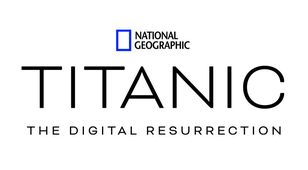Titanic: National Geographic's Unprecedented 3D Scan Reveals Stunning New Details
Editor’s Note: National Geographic's unprecedented 3D scan of the Titanic has been released today, revealing stunning new details about the iconic shipwreck.
Why This Matters: Unlocking the Secrets of the Titanic
The Titanic, a symbol of a bygone era and a tragic maritime disaster, continues to captivate the world's imagination. This new 3D scan, the most comprehensive ever undertaken, offers an unparalleled opportunity to revisit the wreckage, understand its deterioration, and learn more about the final moments of the "unsinkable" ship. This detailed analysis is crucial for historical preservation, marine archaeology, and our understanding of maritime disasters. This article will explore the key takeaways from this groundbreaking project, examining its significance and implications for future research.
Key Takeaways
| Feature | Description |
|---|---|
| Unprecedented Detail: | The scan provides an incredibly detailed 3D model of the wreck, revealing previously unseen features. |
| Advanced Technology: | State-of-the-art sonar technology was used to create a highly accurate model. |
| Preservation Insights: | The scan offers valuable insights into the ship's ongoing deterioration. |
| New Discoveries: | Several previously unknown details about the wreck's condition have been revealed. |
| Future Research: | This scan forms a crucial baseline for future research and preservation efforts. |
Titanic: National Geographic's Groundbreaking 3D Scan
The release of National Geographic's 3D scan marks a pivotal moment in Titanic research. This isn't just another exploration; it's a detailed, high-resolution digital reconstruction that allows researchers and the public alike to examine the wreck like never before. The scan captures the full extent of the wreckage, including both the bow and stern sections, separated by a vast expanse of the ocean floor. The level of detail is astonishing, revealing even small objects scattered around the debris field.
Key Aspects of the Scan
- Scale and Scope: The scan covers the entire wreckage site, providing a complete picture of its current state.
- Resolution and Accuracy: Advanced sonar technology ensures unparalleled accuracy and detail in the 3D model.
- Data Analysis: The vast amount of data generated will require sophisticated analysis techniques to fully interpret.
Detailed Analysis of the 3D Scan
The detailed analysis reveals a heartbreaking picture of the Titanic's deterioration. The images show the progressive collapse of the ship's structure, the effects of deep-sea currents, and the pervasive presence of marine life. Specific areas, such as the collapsed captain's bridge and the slowly dissolving hull, are highlighted, showcasing the relentless power of nature. Comparisons with previous surveys vividly demonstrate the rate of decay, offering valuable insights into the long-term preservation challenges.
Interactive Exploration of the Wreck
The Bow Section: A Closer Look at the Iconic Prow
The bow section, arguably the most iconic part of the Titanic, is meticulously captured in the scan. We can clearly see the damaged structure, the collapsed decks, and the various artifacts strewn about. This section offers a unique opportunity to study the impact of the initial collision and the subsequent sinking process. Key elements such as the anchor chain, remaining railings, and even smaller details like portholes can be examined in unprecedented detail. The scan allows for a virtual "walkthrough" of the bow section, providing a completely immersive experience.
The Stern Section: A Window into the Final Moments
The stern section, less visually striking than the bow, nonetheless provides critical information about the final moments of the Titanic. The scan reveals the extent of the structural damage, the scattering of debris, and the locations of various artifacts. Analyzing these details can help researchers piece together a more complete narrative of the sinking. This section's condition offers valuable insights into the structural integrity of the ship during its final moments and the forces involved in its disintegration.
People Also Ask (NLP-Friendly Answers)
Q1: What is National Geographic's Titanic scan?
A: It's a highly detailed 3D scan of the Titanic shipwreck, providing an unprecedented view of its current state.
Q2: Why is this scan important?
A: It provides crucial information for historical preservation, allows researchers to study the wreck's deterioration, and enables a deeper understanding of the Titanic's sinking.
Q3: How can I see the scan?
A: National Geographic has released visualizations and information about the scan through their various platforms, including their website and documentaries.
Q4: What are the main challenges in studying the Titanic wreck?
A: Challenges include the depth of the wreck, the ongoing deterioration of the ship, and the environmental conditions of the deep sea.
Q5: How does this scan help future research?
A: This scan provides a crucial baseline for future studies, allowing researchers to track the wreck's deterioration over time and plan for effective preservation strategies.
Practical Tips for Understanding the Titanic Scan
- Explore National Geographic's resources: Dive deep into their website and documentaries to see the scan and learn more.
- Research the history of the Titanic: Understanding its history adds context to the scan's findings.
- Learn about sonar technology: Understanding how the scan was created enhances appreciation for its detail.
- Follow scientific publications: Keep up-to-date on the latest research based on this scan.
- Discuss the findings with others: Engage in conversations to broaden your understanding.
Summary: National Geographic's 3D scan of the Titanic provides a groundbreaking new perspective on this iconic shipwreck. The unparalleled detail reveals the extent of the wreck's deterioration and opens new avenues for research and preservation.
Closing Message: The Titanic’s story continues to resonate. This scan allows us to connect with history in an unprecedented way. What new discoveries do you think await us as we continue to explore this tragic yet captivating historical event?
Call to Action: Learn more about the Titanic and National Geographic's groundbreaking scan by visiting [link to National Geographic's website]. Share this article with others interested in maritime history and scientific discovery!

